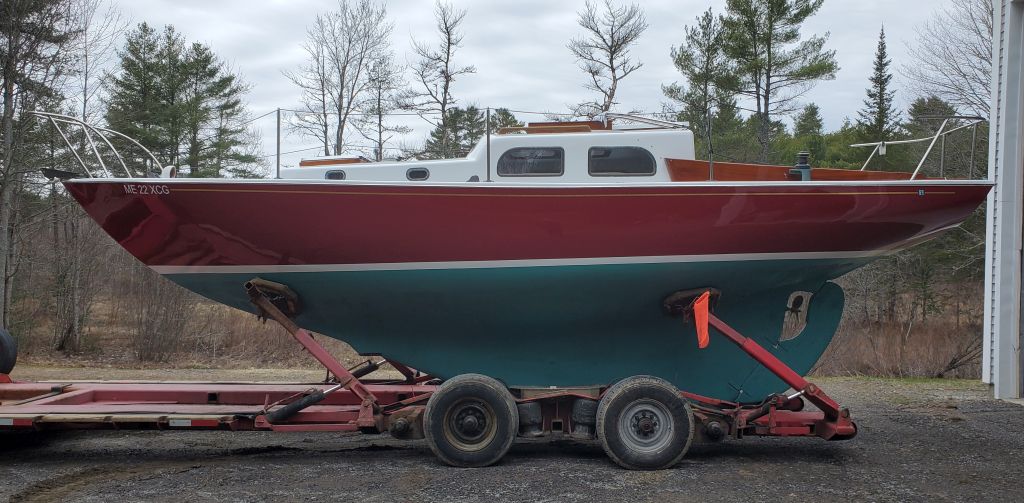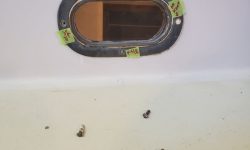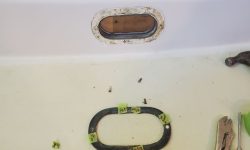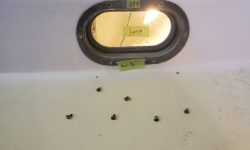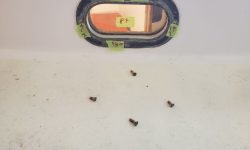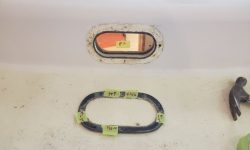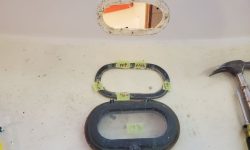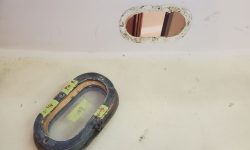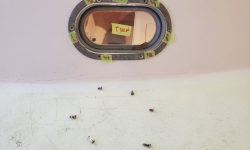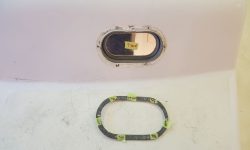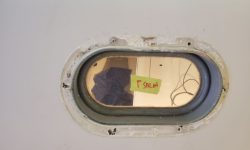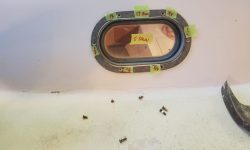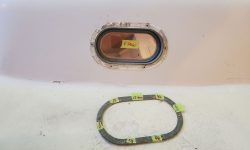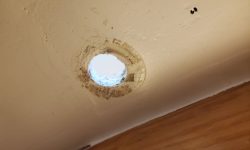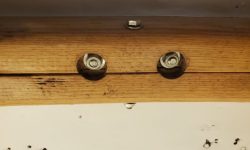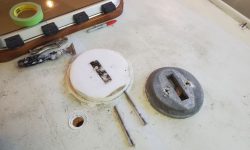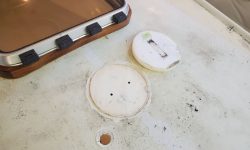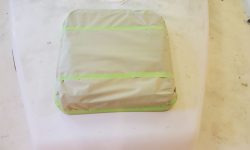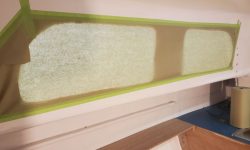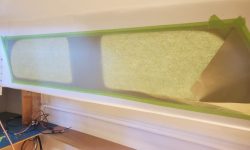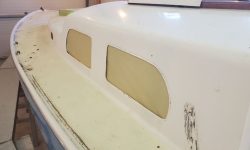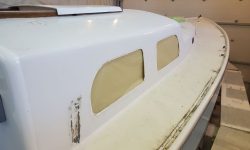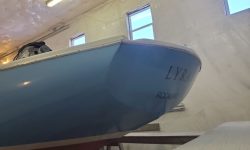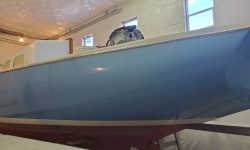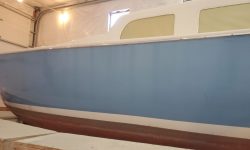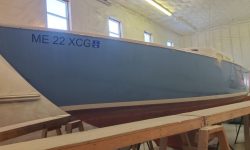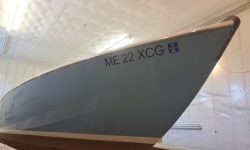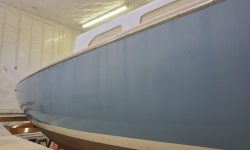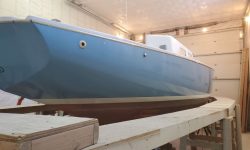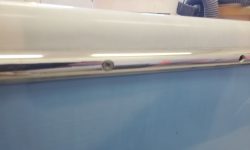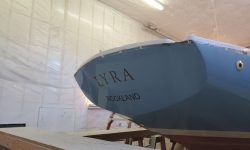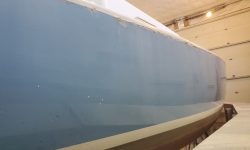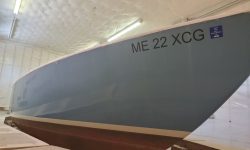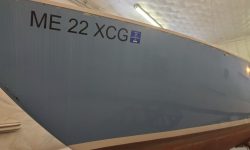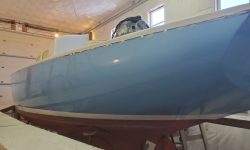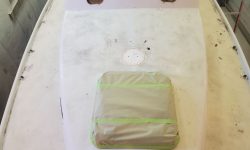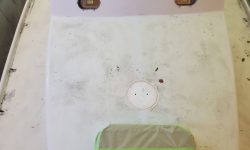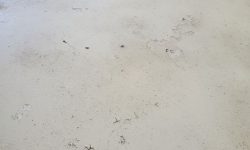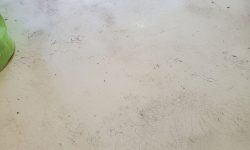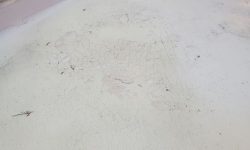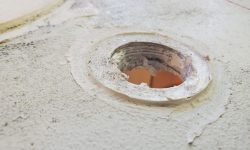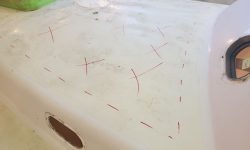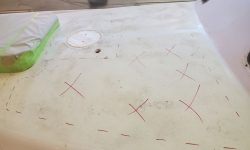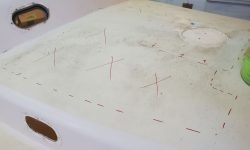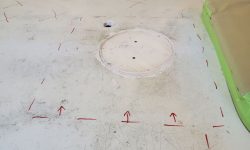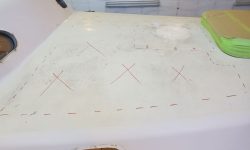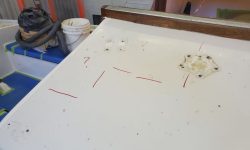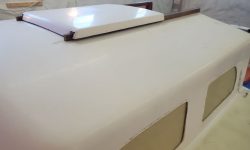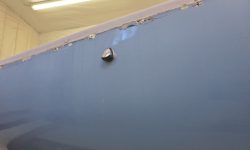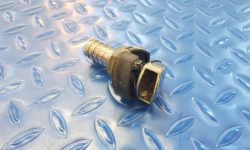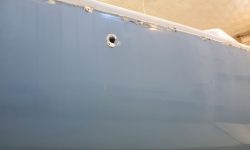January 4, 2022
Lyra Phase 2-6
Tuesday
With a short day planned as I had to leave early for an appointment, I picked up where I left off and removed the smaller opening ports and/or trim rings. There were two different styles of bronze opening ports: an older. smaller style in three locations, which I found I could easily and safely remove completely once the trim rings were removed; and three “newer”, slightly larger, and superior versions (located in the forward-facing side of the main cabin sides, and on the starboard side of the forward cabin) where I found that just removing the trim rings was sufficient as the port bodies were well-adhered and sealed in place and I felt that removal was not only unnecessary, but might cause damage to the interior paint.
In each removal, I catalogued the screw length from each trim ring hole, as these varied based on the cabin thickness and trim ring profile (on the older style ports), and knowing which screws needed to go where would greatly streamline reinstallation later on in the project.
The last hardware to remove was the mast step and mast wiring conduit on the coachroof. Neither posed any particular removal challenges.
I removed most of the excess sealant from the port and deadlight openings, then, to protect the cabin from the worst of the dust and debris to come as the deck work got underway, I papered over the deadlights from the inside and, similarly, covered the forward hatch with masking for protection as well.
Next, I removed the stainless steel rubrail from the seam around the hull/deck joint, an unnoteworthy process except for one screw with a stripped head that I thought was going to pose a major headache, but fortunately and with great care I was able to coax it out on its own.
With a short time left before I had to depart, I went over the coachroof–both the lower section (known to be bad) and the upper section (unknown condition) to better determine my recoring course over the next few days. As anticipated/known, the lower forward section was in poor condition and clearly soft underfoot, with many cracks and crazing visible. There were hints under the paint of a more solid/possibly-previously-repaired section beneath the mast step, and the hole leftover from the mast wiring conduit seemed to reinforce this notion. So the bulk of the recore and repair looked to encompass the vast remainder of this part of the deck, at least as far forward as the hatch. I made some markings for the cuts and removal ahead. This would be a straightfoward repair.
The upper portion of the coachroof sounded better than expected when tapped with hammer, and with some brief memory aids from my work in this area during phase 1, I remembered that the core had mostly seemed bright and clean when I’d drilled and potted fastener holes for the companionway and some of the hardware. I did locate a small area on the starboard aft side, near the winch and cleat locations, with suspect soundings, and I’d investigate this further presently. I planned to leave the companionway hatch in place for now to limit dust ingress into the cabin, but would remove it later for its own surface prep and painting.
Finally, on the starboard side of the hull was an old fuel tank vent, which the owner had plugged with a vent fitting to fill the existing hole temporarily. Now, with hull work to come and the opportunity to patch the obsolete hole, I removed the vent fitting.
Total time billed on this job today: 3.5 hours
0600 Weather Observation: Fair, 4°. Forecast for the day: Sunny, 25°


